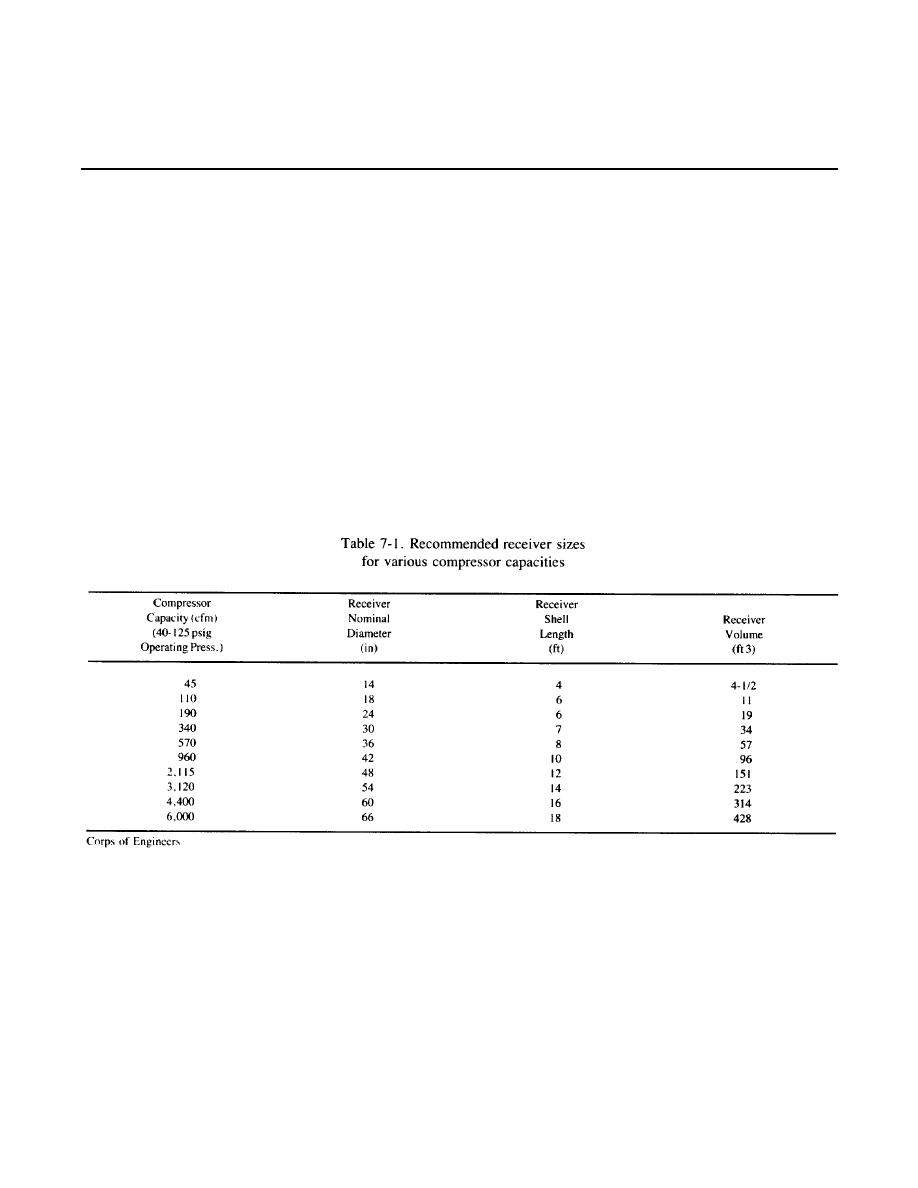
*TM 5-810-4/AFM 88-8, Chap. 3
CHAPTER 7
AIR RECEIVER
7-1.
Functions.
The air receiver dampens pulsations entering the discharge
line from the compressor; serves as a reservoir for sudden or
unusually heavy demands in excess of compressor capacity;
prevents too frequent loading and unloading (short cycling)
of the compressor; and separates moisture and oil vapor,
allowing the moisture carried over from the aftercoolers to
precipitate. Air receivers shall be constructed in accordance
with ASME Boiler and Pressure Vessel Code Section VIII.
7-2.
Determining receiver size.
After the air compressor capacity has been established, the
appropriate receiver size can be determined. Table 7-1 lists
the sizes of air receivers in common use and the compressor
capacities recommended for each receiver size, at pressures
of 40 to 125 psig.
7-3.
Installation.
The receiver will be installed on an equipment pad to keep
it dry. Adequate space around the unit is needed for draining,
inspection, and maintenance. When the receiver is located
outside, the safety valve and pressure gauge will be installed
indoors to prevent freezing, and the associated outdoor pip-
ing will be heat traced and arranged to drain back to the
receiver. Where automatic condensate traps are used with
receivers located outdoors, the traps will be located indoors
and the outdoor piping heat traced or the traps and piping
located outdoors will be provided with electric heat tape to
protect them from freezing.
7-1



 Previous Page
Previous Page
